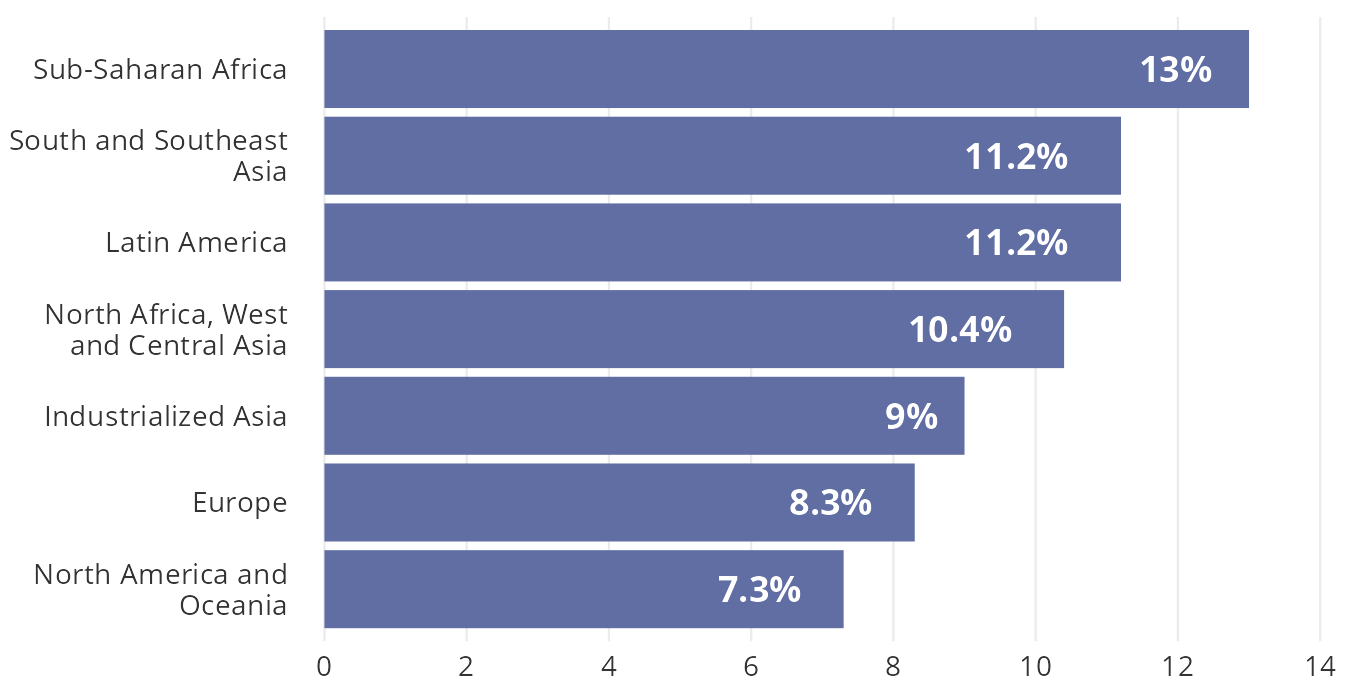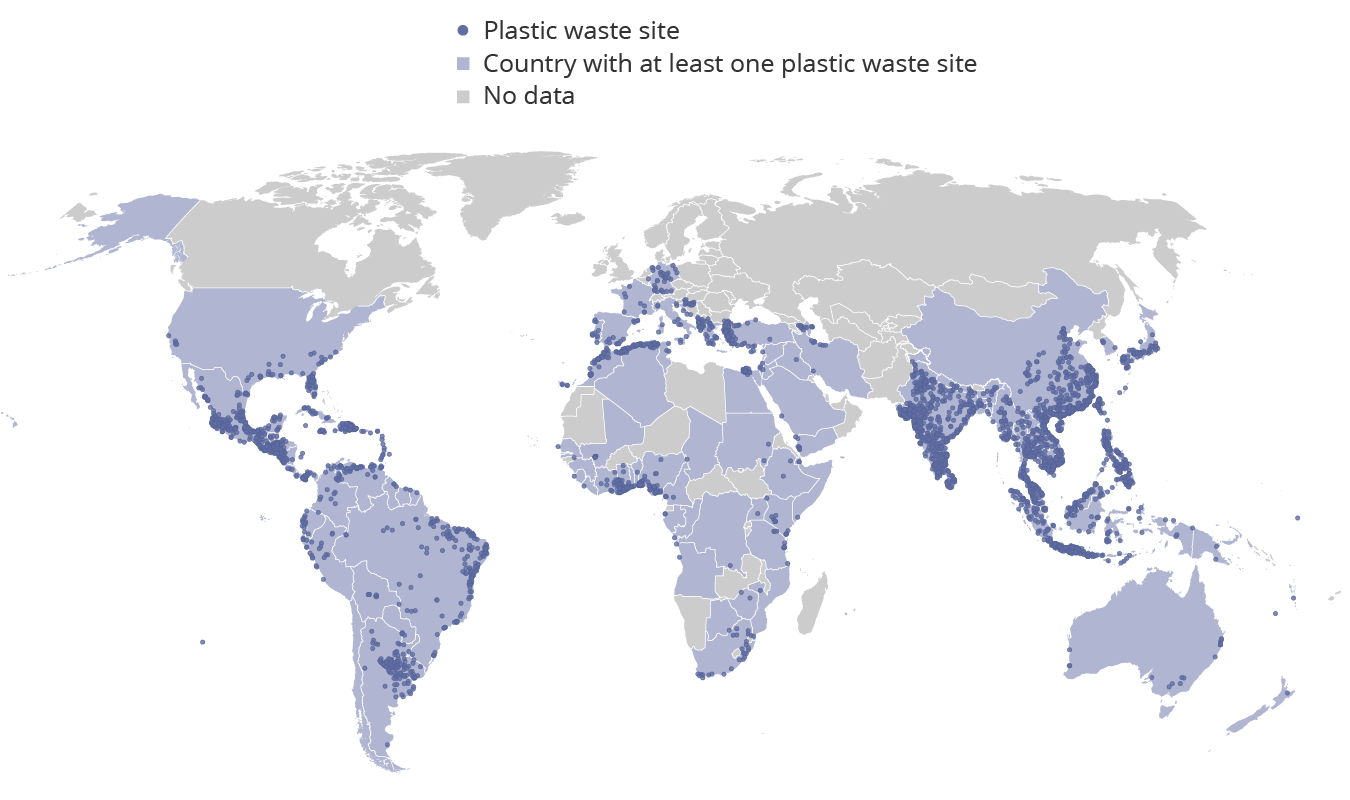Explore
17 SDGs
↓ Read the full story

A country can be considered to be on a sustainable path if it can maintain its standard of living without depleting its natural resources or otherwise degrading the environment, for example by polluting or not managing waste well. [target: 12.2] aims to achieve the sustainable management and efficient use of natural resources by 2030.
A country would not be considered sustainable if its income is derived principally from depleting non-renewable natural resources such as oil, gas, and coal. The country cannot sustain its economy once the resources are depleted.
On the other hand, if a country relies on sources such as sustainable timber and fishing and gets energy from renewable sources such as wind or solar, it is possible to continue generating income in the future.
To assess the sustainability of a country’s economy, we look at whether its income – Gross Domestic Product (GDP) – is generated by draining natural resources. This can be done using data from the Changing Wealth of Nations, a World Bank initiative.[reference: World Bank. 2021. [link: https://www.worldbank.org/en/publication/changing-wealth-of-nations The Changing Wealth of Nations 2021 : Managing Assets for the Future.] Washington, DC] According to the Changing Wealth of Nations, the wealth associated with a country’s natural resources is determined by the stock of a resource (for example, the amount of oil reserves) and its price (for example, the oil price). The value of a country’s natural resources is called its natural capital.
Have countries grown sustainably in past decades?
Take a country like Vietnam. From 1995 to 2018 its GDP per capita grew five-fold from $1800 per capita to $9800. This economic progress did not come at the expense of the value of its natural resources. Over this period, Vietnam doubled its natural capital. This is mostly attributable to increases in the value of renewable natural resources – particularly an expansion of cropland and the value of mangroves.
The situation has been different in Nigeria. While the country has also experienced economic growth in the past decades, this has been achieved in part by unsustainable use of natural resources. By 2018, Nigeria had only about half the wealth from natural resources as it did in 1995, driven by diminishing areas for timber, and decreases in the value of natural gas and cropland.
If Nigeria fails to move to a more sustainable path, it will be difficult for its economy to continue growing. It might experience patterns seen in the United Arab Emirates, where a drain in the value of oil reserves has made it challenging for the country to maintain its income level of 1995. From 1995 to 2018, GDP per capita in the United Arab Emirates declined by 23 percent.
It is possible for countries to be in the bottom-right quadrant – to experience declines in GDP per capita while growing natural capital, but this is rare. Eventually countries leverage growth in the value of their natural resources to propel their economy.
The world economy as a whole has grown without depleting its wealth from natural resources over the past decades. Yet from 2012-2018 – the latest years with data – this trend has reversed, putting decades of sustainable growth at risk. Even if economic growth is not depleting natural wealth, it may have adverse environmental consequences such as increased greenhouse gas emissions and pollution.
The global trend is largely driven by upper middle- and high-inome countries. Low-income countries have seen declines in the value of their natural capital over the past decades and as a result have not grown sustainably.
Select a country to see if it has been on a sustainable path.
Source: [link: https://www.worldbank.org/en/publication/changing-wealth-of-nations World Bank (2021)].
How governments, the private sector, and citizens can increase sustainability
The Changing Wealth of Nations initiative looks at whether countries’ production has been sustainable. SDG 12 also calls for sustainable consumption. This means, for example, that resources should not be wasted, but rather recycled, and safely managed. If either production or consumption is not sustainable, economic output will be constrained, leading to more pollution, greenhouse gas emissions, and loss of biodiversity.
In the SDG framework, [emphasis: the responsibility] to ensure sustainable production and consumption patterns is shared by governments, the private sector, and citizens.
Actions by governments
An important action for governments in this effort is to limit fossil fuel subsidies, as captured in [target: 12.c.1].[footnote: The indicator captures direct transfers of government funds, price gaps between producer and consumer prices, and optionally tax expenditure and other revenue foregone.][reference: [link: https://unstats.un.org/sdgs/metadata/files/Metadata-12-0c-01.pdf https://unstats.un.org/sdgs/metadata/files/Metadata-12-0c-01.pdf]] Fossil fuel subsidies create incentives to prioritise unsustainable production and discourage use of renewable resources. This is a short-run strategy pushing the country to the left side of the quadrants above, and contributes to greenhouse gas emissions and climate change, counteracting [goal: 7] and [goal: 13]. Most countries use fossil fuel subsidies to some extent, and some spend more than five percent of their national income, with Iran and Lebanon at the top devoting 19 and 13 percent, respectively.
Actions by the private sector
The private sector can also play a role in fostering sustainability. Companies can use recycled materials, renewable energy, limit their biodiversity impacts, and more. Some enterprises have taken these actions, in part driven by consumer demand, and by goals set by governments, and the SDGs. One example comes from the auto industry, where the sale of electric cars reached a record of nearly nine percent of all cars sold.[reference: IEA. 2022. [link: https://www.iea.org/reports/electric-vehicles Electric Vehicles], IEA, Paris.][reference: World Bank. 2023. [chapterlink: 9 Atlas of Sustainable Development Goals, Chapter 9.] Washington, DC.]
Though data on the private sector’s role in using natural resources sustainably is limited, it is more advanced than the private sector’s contribution to other SDGs.
SDG indicators explicitly targeted the private sector
1
indicator
In fact, SDG 12 contains the only indicator in the SDGs with a framework explicitly targeted at private sector companies, [target: 12.6.1].[reference: SDG 12 HUB. [link: https://sdg12hub.org/sdg-12-hub/see-progress-on-sdg-12-by-target/126-sustainability-reporting-businesses Target 12.6 Sustainable Business.]] This indicator counts the number of companies that include sustainability information in their annual reports, describing progress towards achieving environment, social, and governance goals. Since the quality and relevance of this information can vary, a company is counted towards the indicator if it meets a minimum requirement, such as disclosing its greenhouse gas emissions, waste generation, recycling practices, energy efficiency and more.[reference: UNSD. 2021. [link: https://sdg12hub.org/sites/default/files/2021-06/Metadata-12-06-01.pdf SDG indicator metadata 12.6.1.]]
The number of companies publishing sustainability reports has been rising, notably in high-income countries. According to the latest data for 2020, only one company in a low-income country is producing a sustainability report. This may reflect that data on sustainability reporting is still in its infancy, particularly in low-income countries. Even when companies publish sustainability reports, it may not lead to action. This makes it challenging to assess progress in this area from the private sector.
Actions by private citizens
The role of private citizens in ensuring that resources are sustainably managed and efficiently used is also important. Particularly in wealthier countries, citizens have opportunities to choose renewable energy for transportation, heating, and electricity. Throughout the world, individuals can minimise food waste, which is captured in [target: 12.3], as a large fraction of food production never gets consumed. In poorer countries, most food waste happens in the production and storage stage. In North America and Europe, a significant share of waste is at the consumer level, meaning that households end up throwing away large amounts of food they purchased.[reference: Flanagan, Katie, K. A. I. Robertson, and Craig Hanson. 2019. [link: https://www.wri.org/research/reducing-food-loss-and-waste-setting-global-action-agenda Reducing food loss and waste: Setting a Global Action Agenda.] World Resource Institute, Washington DC.] [reference: Braich, G., V. Ricciardi and Y. Serkez. 2020. [link: https://datatopics.worldbank.org/sdgatlas/archive/2020/goal-12-responsible-consumption-and-production/ Managing plastic and food waste for a sustainable future.] In Atlas of the Sustainable Development Goals 2020: From World Development Indicators, edited by A. F. Pirlea, U. Serajuddin, D. Wadhwa, M. Welch and A. Whitby. Washington, DC: World Bank.] If this food waste can be reduced, it would decrease the need for natural resources for production, storage, and transportation, placing us on a more sustainable path.
Action is needed from all stakeholders – governments, the private sector, and citizens – to ensure that production and consumption patterns become more sustainable. Failing to do so could threaten progress in other goals. If countries deplete their natural capital, this will make it harder to achieve the climate change goal, [goal: 13], stall progress in moving toward clean energy, [goal: 7], and threaten long term growth, [goal: 8]. Improvements in these areas can help cities to become more sustainable, [goal: 11], as well as industries, [goal: 9].
Learn more about SDG 12
In the charts below you can find more facts about SDG {activeGoal} targets, which are not covered in this story. The data for these graphics is derived from official UN data sources.




